#elegiac couplets
Text
Death of a Charioteer
Martial, Epigrams X.53
I am the famous Scorpus, glory of the shout-filled Circus,
Source of your clapping, Rome, and your brief delight;
Envious Lachesis snatched me away at twenty-seven--
Counting my victories, she thought me elderly.
Ille ego sum Scorpus, clamosi gloria Circi,
Plausus, Roma, tui deliciaeque breves,
Invida quem Lachesis raptum trieteride nona,
Dum numerat palmas, credidit esse senem.

Mosaic depicting a charioteer of the albata (White) faction, one of the four factions that dominated Roman chariot racing, with his horse. Artist unknown; 1st half of 3rd cent. CE. From the Villa dei Severi, Baccano; now in the Palazzo Massimo alle Terme, Rome.
#classics#tagamemnon#Latin#Latin language#lingua latina#translation#Latin translation#poetry#poetry in translation#Roman poetry#Ancient Rome#Roman Empire#Martial#epigram#elegiac couplets#ancient athletics#chariot racing
84 notes
·
View notes
Text

#carmina gigantia#elegiac couplets#elegiac distych#latin poetry#they might be giants#latin language#latin langblr#Spotify
0 notes
Text
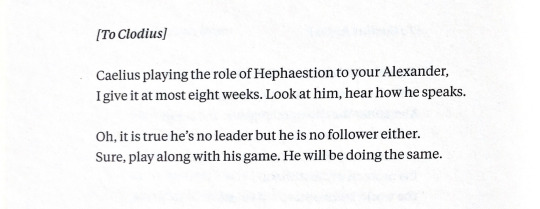
Anna Jackson, I, Clodia
#there are some Takes in this poetry collection. and im gnawing on them#(poems ordered in a chronological narrative and this one is post clodius sacrilege trial and just pre clodia/caelius affair)#also the way this is in elegiac couplets is making me go auhauhyufsfguyahedfahejf#poetry#marcus caelius rufus#beeps
95 notes
·
View notes
Text
what meter is this….
2 notes
·
View notes
Text

Attempt at writing elegiac couplets
0 notes
Text



Four Treasures of the Study · 文房四宝
蒲一永 Pu Yi Yong · The Brush
Eight Principles of Yong. Traditionally, it was believed that practicing the eight common strokes in regular script, all of which can be found in the character "Yong," could lead to writing all characters well. According to legend, it was created by Wang Xizhi in the Eastern Jin Dynasty, "Yong" is also the first character in his famous work 蘭亭集序 Lantingji Xu (Preface to the Poems Collected from the Orchid Pavilion).
The surname "Pu" could potentially be a homage to the famous Chinese writer Pu Songling in the Qing Dynasty. In his most popular work 聊齋誌異 Liaozhai Zhiyi (Strange Tales from a Chinese Studio), the focus of the tales are on the emotional entanglements between humans and supernatural beings in the world.
陳楮英 Chen Chu Ying · The Paper
Chu, which refers to the paper mulberry plant, was historically used in ancient China as the raw material for making mulberry paper and Xuan paper. Additionally, "Chu" was used as a term synonymous with paper in ancient times. In EP4, Chuying mentioned that the "chu" in her name means paper.
曹光硯 Cao Guang Yan · The Inkstone
Yan, also known as Yantai, is the name of the inkstone used in calligraphy. The inkstone is used to grind the ink stick into powder, which is then mixed with water on the inkstone to create ink suitable for calligraphy.
執念 The Obsessions · The Ink
The obsessions are one of the ever-changing elements in the show, the elegiac couplets are uniquely written with whole heart and mind for the different obsessions.
#oh no! here comes trouble#oh no here comes trouble#不良執念清除師#不良执念清除师#twdramaedit#asiandramasource#dailyasiandramas#cdramasource#dramasource#twdrama#taiwanese drama#caps#chinese stuff#pu yiyong#Tseng Jing Hua#chen chuying#vivian sung#sung yun hua#Peng Cian You#cao guangyan#i dont even know if this is even interesting to anyone im just splurging thoughts and random meta#this post took 10yrs to make can you believe trying to do the write up was harder than trying to make the gifs#half way through making the gifs i realised i did it in simplified and when i tried to switch to traditional the font didnt work 🥴#i was trying to find a scene where guangyan was in his doctor action but i didnt want to use the cpr scene bc sads#this is he best one i could find where he's wearing a lab coat
316 notes
·
View notes
Text
Ovid Daily's Summer Book Club 2023:
The Heroides
The first fifteen poems feature letters (written in elegiac couplets) from famous heroines of myth to their lovers, including: Penelope to Odysseus, Dido to Aeneas, Medea to Jason, among many others. The last six (aka the Double Heroides) are paired letters from heroes and responses from heroines, including Paris and Helen, among others.
The Heroides will run from Monday, July 10, 2023 to Monday, September 25, 2023. Each poem will be spread over 2 to 3 days, depending on its length. The Latin and translation will be those featured in Grant Showerman's 1914 edition.
Schedule:
July 10 & 11: Penelope to Odysseus
July 13 & 14: Phyllis to Demophoon
July 17 & 18: Briseis to Achilles
July 20 & 21: Phaedra to Hippolytus
July 24 & 25: Oenone to Paris
July 27 & 28: Hypsipyle to Jason
July 31 & August 1: Dido to Aeneas
August 3 & 4: Hermione to Orestes
August 7 & 8: Deianira to Hercules
August 10 & 11: Ariadne to Theseus
August 14 & 15: Canace to Macareus
August 17 & 18: Medea to Jason
August 21 & 22: Laodamia to Protesilaus
August 24 & 25: Hypermnestra to Lynceus
August 28 & 29: Sappho to Phaon
August 31, September 1 & 2: Paris to Helen
September 5, 6 & 7: Helen's response to Paris
September 11 & 12: Leander to Hero
September 14 & 15: Hero's response to Leander
September 18, 19 & 20: Acontius to Cydippe
September 23, 24 & 25: Cydippe's response to Acontius
64 notes
·
View notes
Text
Oh why not. I’ve been doing elegiac couplets for ClassicsTober over on bluesky to practice my poetry, so here’s my fumbling attempts so far
Dies I: Cassandra
[carmen ad dianam illam nuper defunctam]
Exclamo, taceo; moveo audientes nisi senes
Quod qui non vivent, deposita ut ferimus
Dies II: Medusa
Cum statuis sedeo tranquilla apud hasce sorores
Terrorem oblitae donec adiret edax
25 notes
·
View notes
Text
hello! does anyone here like elegiac couplets?
1 note
·
View note
Text
I read the Latin part of the Metamorphoses emails out loud to force myself to get better at spoken Latin (rip to me -- I am less good at dactylic hexameter than elegiac couplets and my appalachian accent makes me sound....well, I shant say)
and I got to this line (658, the top one)

and i made the most ungodly gurgling sound trying to get all those elisions out...it's too many g's right next to each other Ovid...your elision game is too powerful for me...
#ovid#ovid daily#metamorphoses#metamorphoses daily#one day my spoken latin will be excellent!!#but today is not that day#I'm fighting the ridiculous combination of native english speaker and USA southern accent holder when reading aloud...and I am losing lol
11 notes
·
View notes
Text
King Zeus, give us fine things whether we pray for them or not;
Keep from us woes, even if we ask them.
Ζεῦ βασιλεῦ, τὰ μὲν ἐσθλὰ καὶ εὐχομένοις καὶ ἀνεύκτοις
ἄμμι δίδου: τὰ δὲ λυγρὰ καὶ εὐχομένων ἀπερύκοις.
-Anth. Pal. 10.108 ~ [Plato], Alcibiades II 143a
#classics#tagamemnon#Greek#Greek language#Ancient Greek#Ancient Greek language#translation#Greek translation#Ancient Greek translation#poem#poetry#poetry in translation#Greek poetry#Ancient Greek poetry#proverb#couplet#elegiac couplets#Greek religion#Ancient Greek religion#Hellenic polytheism#Plato#Anthologia Palatina#Palatine Anthology#Anthologia Graeca#Greek Anthology#Ancient Greece#Classical Greece
81 notes
·
View notes
Text
Writing initiative #7
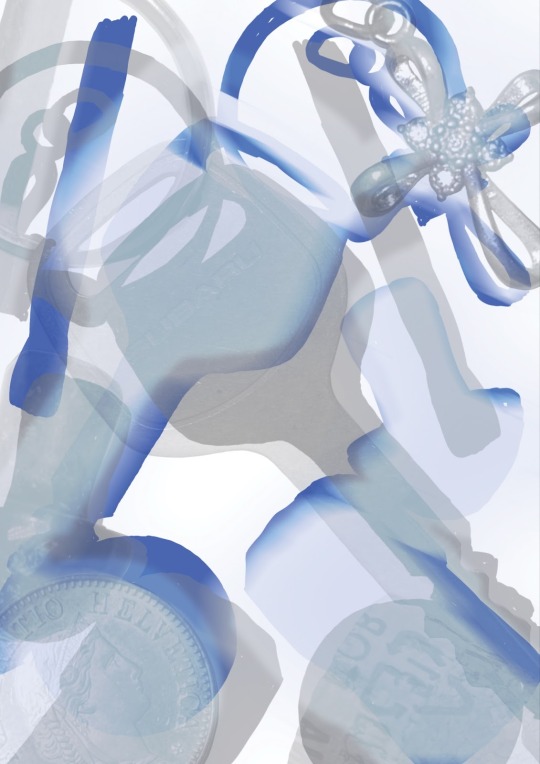
2D - This is a visual representation of physical objects that carry the emotions of elegy. Mourning, sadness, wistfulness, loss, happy memories, a bitter-sweet end, they are all elegiac emotions that one has experienced.
As time passes, happy memories fade or the emotions become less intense – it is portrayed through the fading and bleeding of shapes. Different exposures and multiple layers represent the complexity and layers of the feelings that one can have while mourning an experience, an object or a person.

3D - This piece is a combination of the typographical representation of elegy and a more abstract aspect of the notion. The background is an abstract composition of the elegiac emotions – they change, fluctuate and morph – happy memories become wistful, sad and negative experiences become more bearable and less intense. The delicate sheets of thin paper covering the background acts as a veil that represents a threshold between the emotions and a more grounded way to experience elegy. The cutout letters that are placed on top of the veil make up a poem written in the style of elegiac couplets that was used in Greek and Latin verse. The poem represents the history and etymology of the word and it sets a tone that contrasts the bright colours obscured by the letters and the thin paper.

4D - This is an original sound that I have recorded and produced with the help of my brother Max Ros and the visuals that accompany the sound. The sound has ventured out of the bounds of visual representation and portrayed elegiac emotions through the combination of sounds. I have used the sound of piano, electric guitar, and atmospheric and candid noises of things like trains, birds, and various ambient noises that surrounded me during the production of this piece. The sound represents something that cannot be put into words, painted or expressed without the use of an audio landscape. The clips that accompany the sound carry personal feelings and weight that is associated with elegiac emotions. The graphics that frame or obscure the clips are there to signify or cover the visuals to signify their importance or obscureness which in turn references the graphics of the 2D visual representation of elegy. The graphics are also a reference to the Experimental piece – the negative space that the sculpture creates in its centre.

Experimental - Coming in a full circle from the 2D piece – this part of the project is a physical representation of elegy and how it manifests in a physical world. This is a mixed media sculpture that was made using clay, acrylic paint, foil and wire for the base and foundation. The sculpture features the outlines of the objects seen in the 2D bringing this project to a complete circle. The cracks that cover the surface of the sculpture are both intentional and the fault of the media, they add to the fragility and inevitable change of elegiac emotions. The shape of this piece is a combination of soft and sharp shapes that create an uneven and random shape. The elegiac emotions fluctuate and change, they become sharper or softer with time and as memories fade, they become more abstract. Elegy is not exactly happy or sad and the sculpture shows that through the interchange of its shapes.
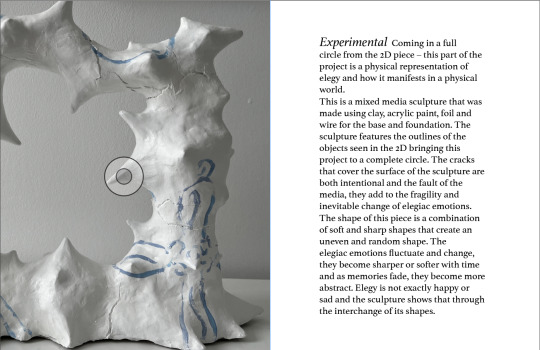
Reflective - this part of the project is a final act and it is there to inform the viewer and provide the context and idea behind each piece. The book references each project and provides tangible information for the viewer to engage with and get introduced to the notion and emotions of elegiac.
0 notes
Text
wilson saying alexandrines ‘felt like wet, unrisen dough, lacking the quick energy of [dactylic hexameter] 🤝 alexander pope saying ‘a needless alexandrine ends the song, / that, like a wounded snake, drags its slow length along.’
#well what if i like alexandrines.#<- guy who is weird about the caesura in elegiac couplets#wiliad#beeps
26 notes
·
View notes
Text
Fīlia adest citior, quam ōlim medicīna probāvit,
incōnsulta tamen forte puella viget.
Quam tūtārentur piscēs, sī tempora vellent,
haec pulchrī cūrae mox Ganymēdis erit.
Cōnsōbrīna, vidē, nē mundō parva gravēris,
nēve jugī patiēns asperī adulta gemās;
sed laetāre magis, gaudē: Fortūna juvābit!
Nī valet ops, genium dīves amōre litā.
Quem genium dīcō, quī nātam jūverit īnsōns?
(Quum Lūcīna suō tempore grāta juvet,
post genitūram autem quem sponte litābis amandō?)
Sincērō vestrum dīlige corde larem.
Ille tuam mātrem, patrem, Lūnamque tuētur;
cuj lar erit cārus, cārior ipsa domus.
I’m writing this elegiac poem (original) for my prematurely born cousin born a few hours ago, but I’m really unsure about how much of this is worth keeping. I originally wanted to end it with couplet 4, but I wanted to have the genius be a lar (as an exhortation for her to love her family), and I couldn’t quite make it fit with the other parts staying the same. So I guess my question is whether the lines after that are worth it at all?
I like the part about Lucina since the birth went well and could’ve gone really, really badly, so a reference to the birth seems called for (I wrote the first part before the birth), but I feel like some of the lar talk is veering into actual religious text more than cool epic classical reference. Not sure if that would be acceptable to my generally religion-shy countrymen. I also like lines 12 and 14 a lot.
Any advice would be greatly appreciated (could be completely abstract or hyperspecific, or whatever) :333
0 notes
Text
Urbs Mi: an elegiac couplet in Latin
I. Urbs es ut anthos humi e qua florescis ita es urbs mi
II. Flos est aetatem ast occides urbs mea vae
0 notes
Text





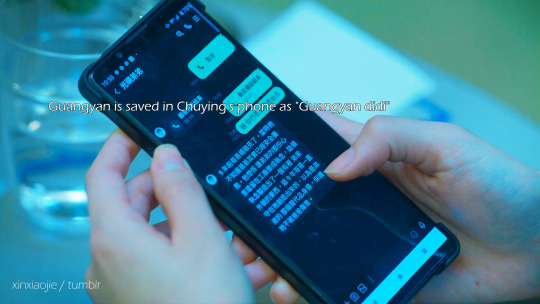
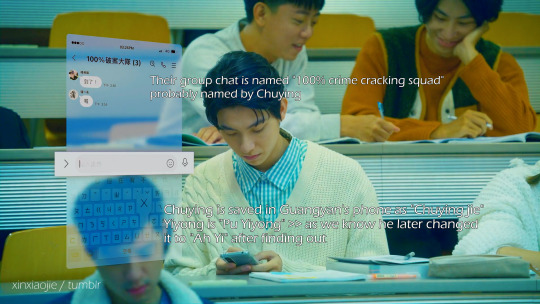
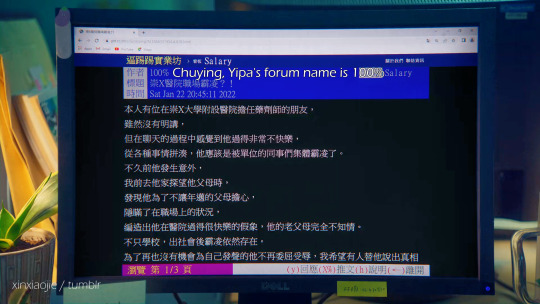





Some little details lost in translation, but I got you covered ৻( •̀ ᗜ •́ ৻)
See more also by me:
Details from EP1 | Guangyan's mindmap | meanings behind their names | elegiac couplets | the stone lion one | YongYan texts 2 | random funny dialogue
#oh no! here comes trouble#不良執念清除師#caps#translations#oh no here comes trouble#不良执念清除师#the little details of this show 😭😭😭 yiyong is a cat guy!!!!! (and guangyan is like a cat i guess it all makes sense#guangyan wanting to be a flawless person is also in line with his reason to be a doctor he really is /the/ model student#i hope these are somewhat interesting!! im reading the comics yiyong had in his room rn give me another day and i'll review them too
346 notes
·
View notes